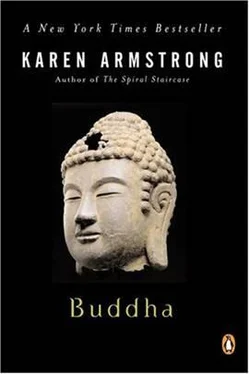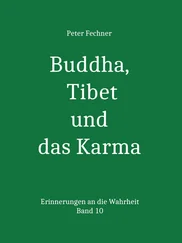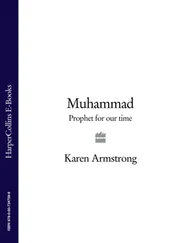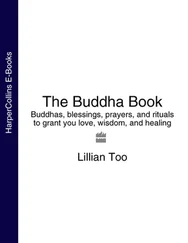What was this parinibbana? Was it simply an extinction? And if so, why was this Nothingness regarded as such a glorious achievement? How would this “final” Nibbana differ from the peace that the Buddha had attained under the bodhi tree? The word nibbana, it will be recalled, means “cooling off” or “going out,” like a flame. The term for the attainment of Nibbana in this life in the texts is saupadi-sesa. An Arahant had extinguished the fires of craving, hatred and ignorance, but he still had a “residue” ( sesa ) of “fuel” ( upadi ) as long as he lived in the body, used his senses and mind, and experienced emotions. There was a potential for a further conflagration. But when an Arahant died, these khandha could never be ignited again, and could not feed the flame of a new existence. The Arahant was, therefore, free from samsara and could be absorbed wholly into the peace and immunity of Nibbana.
But what did that mean? We have seen that the Buddha always refused to define Nibbana, because we have no terms that are adequate for this experience that transcends the reach of the senses and the mind. Like those monotheists who preferred to speak of God in negative terms, the Buddha sometimes preferred to explain what Nibbana was not. It was, he told his disciples, a state
where there is neither earth nor water, light nor air; neither infinity or space; it is not infinity of reason but nor is it an absolute void… it is neither this world or another world; it is both sun and moon.
That did not mean that it was really “nothing”; we have seen that it became a Buddhist heresy to claim that an Arahant ceased to exist in Nibbana. But it was an existence beyond the self, and blissful because there was no selfishness. Those of us who are unenlightened, and whose horizons are still constricted by egotism, cannot imagine this state. But those who had achieved the death of the ego knew that selflessness was not a void. When the Buddha tried to give his disciples a hint of what this peaceful Eden in the heart of the psyche was like, he mixed negative with positive terms. Nibbana was, he said, “the extinction of greed, hatred and delusion”; it was the Third Noble Truth; it was “Taintless,” “Unweakening,” “Undisintegrating,” “Inviolable,” “Non-distress,” “Non-affliction,” and “Unhostility.” All these epithets emphasized that Nibbana canceled out everything that we find intolerable in life. It was not a state of annihilation: it was “Deathless.” But there were positive things that could be said of Nibbana too: it was “the Truth,” “the Subtle,” “the Other Shore,” “the Everlasting,” “Peace,” “the Superior Goal,” “Safety,” “Purity, Freedom, Independence, the Island, the Shelter, the Harbor, the Refuge, the Beyond.” It was the supreme good of humans and gods alike, an incomprehensible Peace, and an utterly safe refuge. Many of these images are reminiscent of words that monotheists have used to describe God.
Indeed, Nibbana was very much like the Buddha himself. Later Buddhists of the Mahayana school would claim that he was so wholly infused by Nibbana that he was identical with it. Just as Christians see what God might be like when they contemplate the man Jesus, these Buddhists could see the Buddha as the human expression of this state. Even in his own life, people had intimations of this. The brahmin who could not classify the Buddha, since he no longer fit into any mundane or celestial category, had sensed that, like Nibbana, the Buddha was “Something Else.” The Buddha had told him that he was “one who had woken up,” a man who had shed the dreary, painful limitations of profane humanity and achieved something Beyond. King Pasenedi had also seen the Buddha as a refuge, a place of safety and purity. When he had left home, he had experimented with his human nature until he discovered this new region of peace within. But he was not unique. Anybody who applied himself or herself seriously to the holy life could find this Edenic serenity within. The Buddha had lived for forty-five years as a human without egotism; he had, therefore, been able to live with pain. But now that he was approaching the end of his life, he was about to shed the last indignities of age; the khandha, the “bundles of firewood” that had blazed with greed and delusion in his youth, had long been extinguished, and could now be thrown away. He was about to reach the Other Shore. So he walked feebly but with great confidence toward the obscure little town where he would attain the parinibbana.
The Buddha and Ananda, two old men, crossed the Hirarinavati river with their crowd of bhikkhus, and turned into a grove of sal trees on the road that led into Kusinara. By now the Buddha was in pain. He lay down and the sal trees immediately burst into flower and dropped their petals upon him, even though it was not the season for blossom. The place was filled with gods, the Buddha said, who had come to witness his last triumph. But what gave a Buddha far more honor was the fidelity of his followers to the Dhamma he had brought them.
As he lay dying, the Buddha gave directions about his funeral. His ashes were to be treated like those of a cakkavatti; his body should be wrapped in a cloth and cremated with perfumed woods, and the remains buried at the crossroads of a great city. From first to last, the Buddha had been paired with the cakkavatti, and after his enlightenment had offered the world an alternative to a power based on aggression and coercion. His funeral arrangements drew attention to this ironic counterpoint. The great kings of the region, who had appeared to be so potent when the young Gotama had arrived in Magadha and Kosala, had both been snuffed out. The violence and cruelty of their deaths showed that the monarchies were fueled by selfishness, greed, ambition, envy, hatred and destruction. They had brought prosperity and cultural advancement; they represented the march of progress and benefited many people. But there was another way of life that did not have to impose itself so violently, that was not dedicated to self-aggrandizement, and that made men and women happier and more humane.
The funeral arrangements were just too much for Ananda. His plight during these last days reminds us of the immense gulf that separates the unenlightened from the Arahant. Ananda knew all about Buddhism intellectually, but this knowledge was no substitute for the “direct knowledge” of the yogin. It could be of no help to him when he started to experience the pain of the loss of his master. This was infinitely worse than the death of Sariputta. He understood the Noble Truth of Suffering with his mundane, rational mind, but he had not absorbed it so that it fused with his whole being. He still could not accept the fact that everything was transient and would pass away. Because he was not a proficient yogin, he could not “penetrate” these doctrines and make them a living reality. Instead of feeling a yogic certainty, he felt only raw pain. After he had listened to the Buddha’s uninipassioned directions about his ashes, Ananda left his master’s bedside and fled to one of the other huts in the grove. For a long time, he stood weeping, resting his head against the lintel. He felt a complete failure: “I am still only a beginner,” wept the elderly bhikkhu. “I have not reached the goal of the holy life; my quest is unfulfilled.” He lived in a community of spiritual giants who had reached Nibbana. Who would help him now? Who would even bother with him? “My Teacher is about to attain his parinibbana -my compassionate Teacher who was always kind to me.”
When the Buddha heard about Ananda’s tears, he sent for him. “That is enough, Ananda,” he said. “Don’t be sorrowful; don’t grieve.” Had he not explained, over and over again, that nothing was permanent but that separation was the law of life? “And Ananda,” the Buddha concluded, “for years you have waited on me with constant love and kindness. You have taken care of my physical needs, and have supported me in all your words and thoughts. You have done all this to help me, joyfully and with your whole heart. You have earned merit, Ananda. Keep trying, and you will soon be enlightened too.”
Читать дальше












